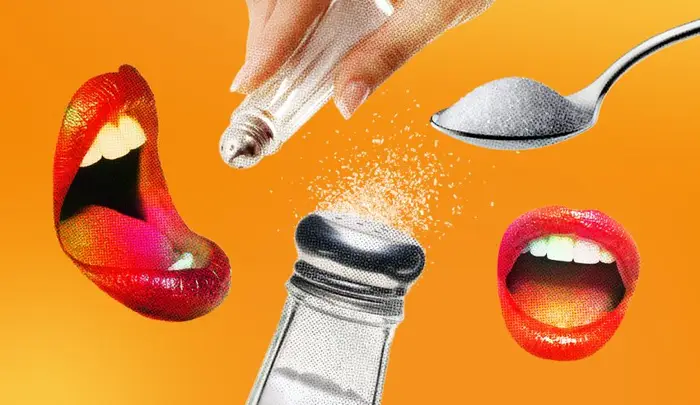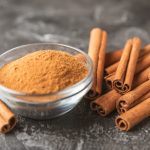The Meals and Drug Administration (FDA) recommends holding your sodium consumption to not more than 2,300 milligrams per day. That is equal to about 1 teaspoon of desk salt (or iodized salt). However here is the issue. Desk salt is simply one of many many salts that Individuals routinely use to taste their meals. All of those salts range in crystal dimension and diploma of “saltness.” For instance, coarse kosher salt incorporates 1,920 milligrams of sodium per teaspoon. Which means the sodium focus of every salt is basically completely different.
This additionally does not keep in mind how a lot desk salt (small, finely floor salt) suits in a teaspoon in comparison with flaky salt like sea salt. Moreover, the pinch of salt added a few times per recipe throughout cooking is lower than 1/8 teaspoon, which is much lower than the advisable most. Essentially, we as a society haven’t given salt a good likelihood. And I am right here right now to defend the glory of salt.
Comparability of salt and sodium
One factor to remember is that salt and sodium will not be the identical. Normally after we hear about salt and sodium, the phrases are usually confused interchangeably, which will be complicated at greatest and dangerous at worst when in search of dietary recommendation.
Salt consists of sodium chloride, which is roughly 40% sodium and 60% chloride. So, whereas the mineral sodium is a part of the chemical composition of salt, it doesn’t make up 100% of every grain of salt. Why is that this necessary? After we concentrate on how a lot salt we devour every day, we trick ourselves into pondering we’re exceeding our every day aim, when actually we’re manner over it. I can really feel it. Some analysis even suggests that you could be profit from including slightly extra salt to your weight loss program, however suggestions stay low on condition that Individuals proceed to eat low-salt diets attributable to circumstances similar to coronary heart illness and hypertension. is.
Importantly, the ions in sodium are why our tongues expertise a “salty” style, and completely different salts have completely different sodium content material, so it is best to all the time style when seasoning. That is why we embrace these cues in our recipes. It is greater than just a bit sneaky snack, it is an necessary step in cooking to keep away from over-seasoning your meals. Kosher salt alone incorporates 53 p.c much less sodium per quantity in comparison with common desk salt. Sodium content material also can range between manufacturers of salt, relying on crystal dimension and impurities, so all the time do some style take a look at when altering salt.
What sorts of salt are there?
Typically, there are about 5 major salts utilized in cooking. These are sea salt, kosher salt, fleur de sel (a French number of sea salt), desk (iodised) salt, and Himalayan pink salt. There are a lot of different titles, similar to flavored, smoked, and completed, however they’re derivatives of a broader sort of salt.
High quality-grained salts, similar to tremendous sea salt, kosher salt, and desk salt, are the very best salts to make use of in cooking. That is to make sure that the salt grains absolutely combine and dissolve with the meals. That manner, every chew will not style too salty.
Once you need to deliberately add saltiness, like on prime of cookies or a leafy salad, a coarser salt like fleur de sel or Himalayan pink salt is greatest.
What’s kosher salt?
Kosher salt is extensively used all through the group {of professional} cooks and recipe builders alike. You’ve got most likely seen the massive purple or blue packing containers (relying in your affinity for Diamond Crystal or Morton’s) on the grocery retailer.
However why is it referred to as kosher salt? Whereas any salt can *be* kosher if produced underneath correct supervision, the identify kosher salt just isn’t derived from spiritual practices. Earlier than refrigeration grew to become common, individuals wanted a solution to protect meat and poultry for lengthy intervals of time with out concern of spoiling it. This salt was then used to take away blood from meat and poultry. This can be a course of referred to as “koshering.”
This identify refers to granularity. Bigger, coarser grains, on the time, caught higher to meat with out essentially utterly dissolving in protein. Now, it is a completely happy center floor between the fine-grained iodized salt and the ultra-flaky sea salt that many cooks favor.
What’s iodized salt?
Iodized salt, or desk salt, might be the commonest salt you have come into contact with. Desk salt has been the ever-present salt in America for years, whether or not it is within the native diner’s salt shaker, on the dinner desk (therefore its identify), or in small packs in takeout baggage.
However why iodine? Goiter, a standard thyroid illness attributable to iodine deficiency, was really prevalent within the early 1900s. Launched to the American public in 1924, iodized salt is made by merely spraying salt with an answer of potassium iodine and letting it dry. Sure, all I wanted was a easy spray. In actual fact, solely about 28 grams of answer are required per 1,000 kilos of salt.
Do some salts provide extra well being advantages than others?
Quick reply: no. Though some salts, similar to pink salt (or Himalayan sea salt), are sometimes touted as being wealthy in vitamins, the quantity of salt you will need to ingest to obtain any dietary advantages is prohibitive; Dangerous to well being.
As for the “processing” of salt, it merely includes a collection of washings and slight heating to take away impurities. Relying on the kind of salt, this can be completed mechanically or manually. For this reason flaked salt, or extra coarsely floor salt, has extra mineral content material (or impurities) as a result of it has not been cleaned as rigorously as finer floor salt.
How to decide on the fitting salt for you?
Select salt based mostly in your cooking wants and preferences. In case your iodized salt suits completely in your salt shaker and you need to use it with confidence figuring out precisely how a lot to make use of based mostly on nationwide tips, that is nice. In case you like pink sea salt, that colour and the slight minerality that comes with the flavour of the ocean, that is nice too.
Nevertheless, I will provide you with slightly trace. Many recipe builders (each on-line and in cookbooks), together with myself, use kosher salt. So maintain that in thoughts when following a printed recipe, as it might improve or lower relying on the quantity of salt wanted. Listed below are some helpful tips to make the mandatory conversions:










